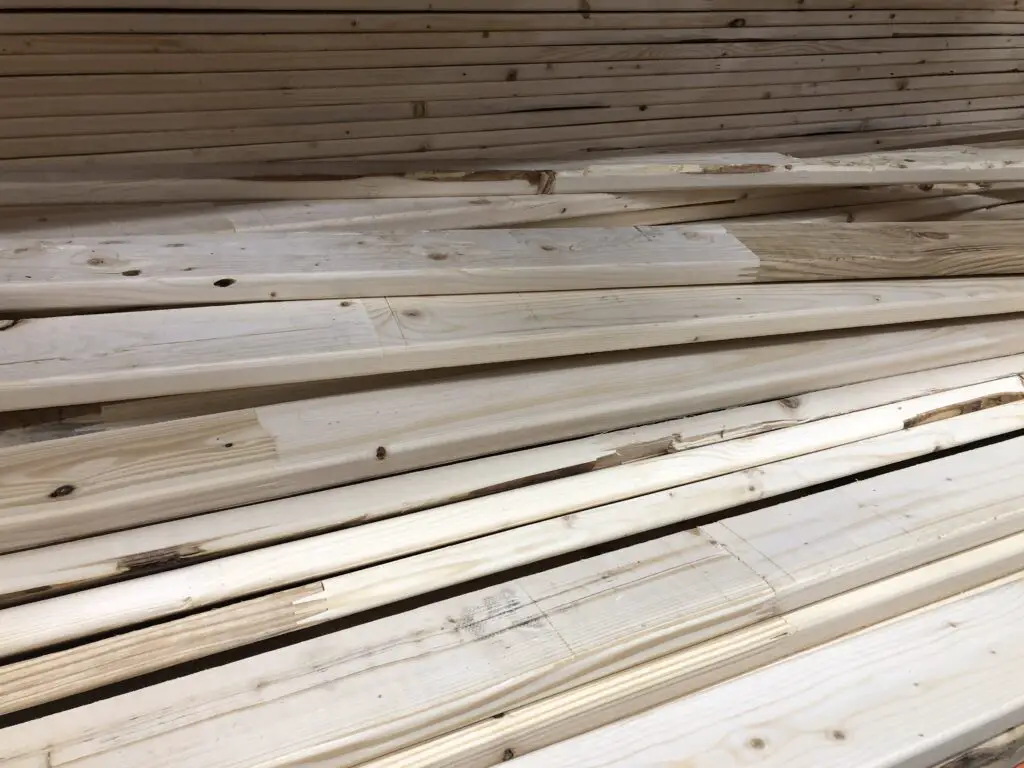Do you need to transport a large amount of wood back to your home or workspace but don’t have an appropriately sized truck to handle the load? Don’t worry, there are certainly many other options available to you! You can have wood transported even without a large vehicle of your own.
The short answer is that there are multiple options available to anyone in need of transporting wood. These include but aren’t limited to:
- Having the wood delivered by the supplier or a third party
- Renting a truck or trailer to use for wood transportation
- Having the woodcut down to fit inside your car
No matter your vehicle circumstances, you should be able to find various options that will suit your needs so you can have your lumber transported from the supplier to your home or workspace.
How Much Lumber Can a Pickup Truck Hold?
With an eight-foot bed, a pickup truck can hold about half a cord of logs, if they are neatly packed together. With a six-foot bed, you should be able to carry around one-third of a cord of wood. Depending on other modifications you may have added, the amount can increase, but those are typically the base values for transporting lumber in a pickup truck.
You also need to figure out how much weight your truck is able to hold. A packed bed of wood may be too heavy, depending on what type of wood it is.
Remember: A full cord of wood is one hundred and twenty-eight cubic feet, so you should be able to determine its half and third values accordingly.
What to Do if You Only Want to Use Your Vehicle to Transport Wood?
Having a truck would be great, if you were starting out with woodworking. This is certainly possible to put wood in a smaller car or truck, though it is essential to prepare in advance properly.
The first step is knowing the dimensions of the wood that you are looking to purchase as well as the storage dimensions of your vehicle. If the wood will fit, then that’s a lot of hassle solved!
However, if the wood can fit inside, but is too long for the trunk door to close, then you will need to have something to tie the wood down with.
Possible Risks to Using Your Vehicle to Transport Lumber
There are a couple of risks to keep in mind when using your vehicle to transport lumber. The number one thing to consider is the stability of the wood that you are transporting.
If any pieces of wood are sticking out of your vehicle, ensure that they are strapped down and secured correctly to reduce the risk of them sliding around or possibly falling out. In the instance that something like this happens, you will not only be putting yourself but other drivers in possible danger.
While being able to make do with what you have is undoubtedly great, you must prioritize safety to reduce the risk of damages and danger.
How Can I Transport Plywood Without a Truck?
There are many options to get the wood back safely to your workshop, some only costing slightly more than others.
Here is a list of various yet efficient methods that will ensure the wood will be safely transported for a reasonable price or none at all! These methods may work differently depending on your situation and circumstances, but hopefully, this list will give you a couple of options to choose from.
Buying a Trailer
A trailer is a cost-effective option should you plan to need regular lumber deliveries. A small, lightweight trailer that a sedan can tow can carry most typical sizes of lumber and can be purchased for $150-$300.
Delivery Through Provider
Not having a truck doesn’t mean you’re out of luck. Most places that sell lumber also offer to deliver any material they sell for a price. While you may have to fork over a few extra dollars, they will take care of all the heavy lifting and delivery for you.
For active woodworkers who will undoubtedly do other projects in the future with the same material, it may be efficient and cost-effective to buy larger quantities and have the provider deliver them to you. Some places will offer discounts on larger quantities of wood, or you may be able to get wholesale prices.
Online Services
Another good option is to check your local Craigslist or Kijiji for handyman ads. There is almost always someone with a truck who would be willing to help get the lumber home for less than the lumber supplier.
This is a great alternative if you don’t want to (or cannot) rent a vehicle and do the transportation yourself.
Asking Around
A considerably cheaper alternative is asking a family member or friend who owns a vehicle big enough to transport the wood to make the pick up for you. That way, you can skip out on having to search for a driver while saving some money in your wallet.
Renting A Vehicle
Another option is to rent a large truck to store the wood inside of it. As there are many truck rental services you can choose from, this is definitely another viable choice for efficient transportation.
Cutting The Wood Down To Size
Lastly, most places will offer to cut the purchased lumber down to size. If this makes sense for your project, you can have them cut everything down into pieces that will fit in your car. This is probably the easiest method but will only work if you can allow the wood to be cut down to smaller sizes.

